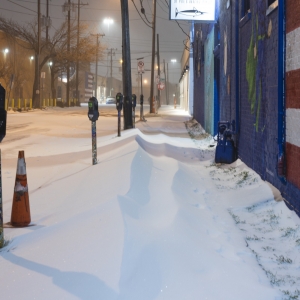The Stream, February 17, 2021: Mekong River Levels Fall Dangerously Low, Commission Says
YOUR GLOBAL RUNDOWN
- The Mekong River Commission called for Beijing to release all available water data after Mekong River levels fell dangerously low.
- A new project at Michigan State University aims to turn wastewater into drinking water.
- Sewer mains and service lines could be letting millions of gallons of groundwater into Traverse City, Michigan’s sanitary sewers.
- Two bills introduced in the Indiana state legislature could help slow PFAS contamination throughout the state.
The San Diego Water Authority and smaller agencies disagree on how much water the city needs.
“If demand is inaccurate, we underset rates and then we have a deficit. But if we overestimate, we can get into a situation where rates are set too high.” – Sarah Davis, a management analyst for Oceanside’s Water Utilities Department. Voice of San Diego reports that the San Diego Water Authority and smaller agencies can’t agree on how much water the city needs. Some water agencies say the Water Authority is overestimating regional water demand by 10 to 20 percent over the next 25 years. Several water district managers said they have witnessed a downward trend in water use over the last couple of decades due to conservation. The Water Authority disputes these claims, saying they haven’t received any data that indicates a large gap in demand predictions.
IN RECENT WATER NEWS
Water Could Make Michigan a Climate Refuge. Are We Prepared?
The Great Lakes region is frequently touted as one of the most climate-resilient places in the U.S., in no small part because of its enviable water resources. But climate change also threatens water quality, availability, and aging water infrastructure by exposing existing vulnerabilities and creating new ones. In this series, members of the Great Lakes News Collaborative explore what it may take to prepare the Great Lakes region for the future climatologists say we can expect.
Are Great Lakes residents and leaders ready for the stirred and shaken conditions that climatologists say we can expect? This is the first in a series of articles co-published by the Great Lakes News Collaborative between Circle of Blue, Bridge Michigan, Great Lakes Now and Michigan Radio.
In Case You Missed It:
HotSpots H2O: Landslide Triggers Devastating Flash Floods in India – The collapse of a mountain flank in India’s Northern Uttarakhand state last week triggered devastating flash floods in the region and destroyed two hydroelectric projects.
What’s Up With Water – February 15, 2021 – This week’s episode covers a study raising questions about the health effects of a contaminant common to drinking water, hackers who tried to add dangerous amounts of treatment chemicals to drinking water in Florida and the town of Joliet, Illinois, which selected a new drinking water provider.
Michigan State University Project Aims To Turn Wastewater Into Drinking Water
Spartan Newsroom reports that a new wastewater treatment plant in East Lansing aims to turn wastewater into drinkable water, although that goal is unattainable due to current regulations. The project, led by Michigan State University professor Wei Liao, will first focus on turning sewage water into renewable energy.
TODAY’S TOP WATER STORIES, TOLD IN NUMBERS
457 MILLION GALLONS OF GROUNDWATER
Leaky sewer mains and service lines could be letting millions of gallons of groundwater into Traverse City’s sanitary sewers. The Traverse City Record-Eagle reports that the total excess flow from January to October of 2020 was 541 million gallons, 457 million of which was from groundwater. Old service lines are part of the problem. But high waters in Lake Michigan also contribute to the inflows. The city has 3 miles of sewer lines that run beneath the lake. Treating the excess flow from the first 10 months of 2020 cost about $2.8 million.
2 BILLS
Two new bills introduced in the Indiana state legislature are intended to address PFAS contamination in the state, the Indianapolis Star reports. One of the bills would establish a maximum contaminant level for PFAS in drinking water. The other would test PFAS levels in current and former military members, who are more likely to be exposed to the chemicals that were often used on military bases. A recent study found levels of PFAS chemicals in Indianapolis’ tap water that were 50 parts per trillion lower than guidelines from the Environmental Protection Agency, but higher than standards from other state governments and advocacy organizations.
In context: Who Pays? PFAS Lawsuits, Legislation Raise Question of Pollution Liability
ON THE RADAR
The Mekong River Commission (MRC) said late last week that water levels in the Mekong River have fallen due to outflow restrictions from Chinese hydropower dams upstream. The river turned blue along the Thai-Laos border, signaling shallow water that is affecting fish migration, farming, and barge transport. Low rainfall and water held in other dams on the Lower Mekong and its tributaries also contribute to the low flows. Reuters reports that the MRC called for Beijing to share all of its water data in order to understand the river’s dynamics.
In context: One By One Big Hydropower Dams Disrupt Mekong River’s Free Flow
Jane is a Communications Associate for Circle of Blue. She writes The Stream and has covered domestic and international water issues for Circle of Blue. She is a recent graduate of Grand Valley State University, where she studied Multimedia Journalism and Women, Gender and Sexuality Studies. During her time at Grand Valley, she was the host of the Community Service Learning Center podcast Be the Change. Currently based in Grand Rapids, Michigan, Jane enjoys listening to music, reading and spending time outdoors.






Leave a Reply
Want to join the discussion?Feel free to contribute!